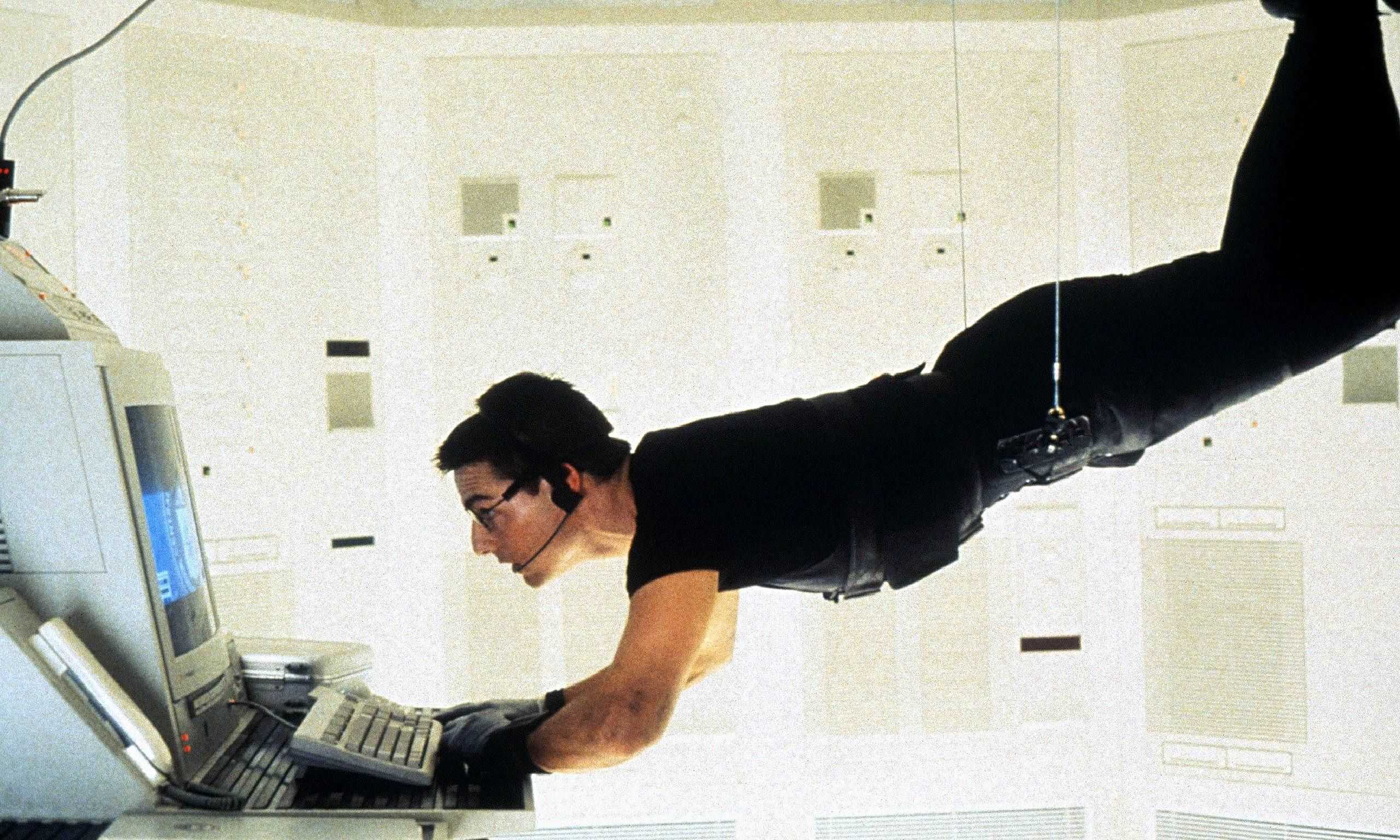 April 18, 1996: Apple unveils a massive $15 million promotional tie-in for the Mission: Impossible movie starring Tom Cruise.
April 18, 1996: Apple unveils a massive $15 million promotional tie-in for the Mission: Impossible movie starring Tom Cruise.
Designed to promote the PowerBook, which Cruise uses in the spy flick, the marketing campaign comes at a particularly bad time. Attempting to climb back into the black after reporting its largest quarterly loss ever, Apple is in the middle of trying to perform its very own impossible mission. And that’s just the start of the problems.
Mission: Impossible PowerBook promo
1996 stands as probably the nadir of Apple’s nasty ’90s. Just a couple of weeks before the Mission: Impossible promo campaign, Apple reported a quarterly loss of $740 million. The shocking scale of the loss — with more than half coming from $1 billion in unsold products — revealed a company in far worse shape than previously thought.
The Mission: Impossible deal was an attempt to imbue Apple with some much-needed cool.
As part of the expensive campaign, Apple launched a “Mission: Impossible — The Web Adventure” site, an early example of online movie advertising. (You can still see Apple’s Mission: Impossible site, although the game sadly no longer works.)
Apple product placement in Mission: Impossible

Screenshot: Apple
The deal also ensured that the PowerBook 5300c got screen time in the movie. Unfortunately, Apple and Paramount Pictures signed the deal so late that Cupertino got no input on the script’s tech elements.
As a result, the Mac shown in the movie uses a command-line interface instead of Mac OS. That made it look way behind the Windows 95 operating system then running on PCs.
Even worse, when a particularly tough job turns up later in the movie, the Mission: Impossible team’s resident computer expert advises the use of nonexistent “Thinking Machines laptops.”
Apparently, only those fictional computers could get the job done. Ouch!
PowerBook 5300: On-screen and on fire, but not on store shelves
A final problem dogged Apple’s Mission: Impossible promo campaign: The PowerBook 5300 wasn’t available to buy when the movie hit theaters. And, soon after the first 1,000 PowerBook 5300 units shipped to dealers around the United States, news broke that two production units caught fire — one at the home of an Apple programmer, the other at Apple’s factory in China.
“The main hallmark for Apple is ease of use,” wrote Pieter Hartsook, editor of The Hartsook Letter, at the time. “If your machine doesn’t work, it’s not easy to use.”
Apple issued a recall on the 100 PowerBook 5300s already sold, replacing the computers with another model. Unfortunately, the replacements packed only two-thirds the hard drive capacity of their predecessors. That forced Apple to lower the price of the laptop by $100.
As a result, moviegoers who saw the PowerBook 5300 plastered on the silver screen could not buy the computer. Not that many people could afford the pricey machines: The top-end PowerBook 5300ce came with a $6,500 price tag, making it the most expensive Apple laptop ever. (Adjusted for inflation, that’s nearly $13,000 today.)
Somehow, Apple pulls off the impossible
The Mission: Impossible promo deal certainly failed to work out as Apple planned. However, 1996 marked the beginning of a major turnaround for the company. Before long, Cupertino abandoned its disastrous clone Mac concept, enjoyed a few surprisingly big hits, and — most significantly of all — brought Steve Jobs back into the fold with the NeXT acquisition.
Now that’s a Hollywood ending!


